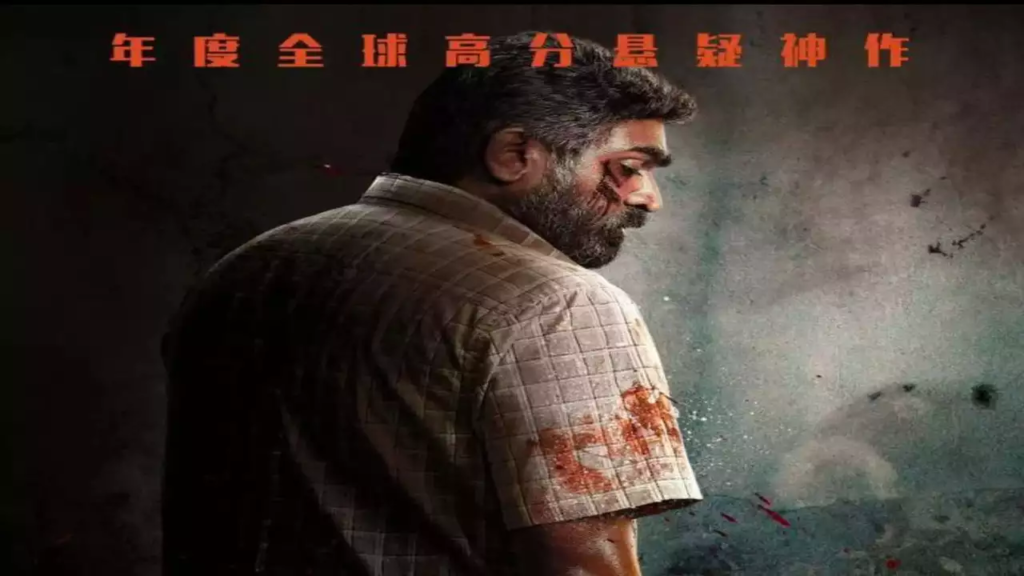The release of the Tamil movie Maharaja in China marks a significant milestone, as it becomes the first Indian film to be screened in the country following a crucial diplomatic breakthrough between India and China.
Directed by Nithilan Swaminathan and starring Vijay Sethupathi, the film has made an impressive debut, earning approximately ₹16 crore (RMB 13.37 million) on its first day. The enthusiastic reception reflects not only the film’s universal appeal but also the growing cultural exchange between the two nations.
A Groundbreaking Cultural Exchange
The screening of Maharaja in China comes at a pivotal moment in India-China relations. The two countries, which had been engaged in a tense border standoff since 2020, recently reached an agreement to normalize ties.
This diplomatic breakthrough was endorsed by Prime Minister Narendra Modi and Chinese President Xi Jinping during the BRICS summit in Kazan, Russia. The accord, aimed at easing tensions along the Line of Actual Control (LAC) in eastern Ladakh, has opened new avenues for cultural and economic cooperation.
The release of Maharaja symbolizes a step forward in rebuilding these bilateral ties through cultural diplomacy. Indian cinema has long had a strong following in China, with films like Three Idiots, Dangal, and Secret Superstar achieving remarkable success.
Read : Chinese Film About Covid-19 Wins Taiwan’s Top Golden Horse Awards
These movies, often centered around social issues, resonate deeply with Chinese audiences, who appreciate their emotional depth and moral themes. Maharaja continues this tradition, offering a narrative that combines suspense with cultural and social commentary.
Read : Chinese Cemetery in Thailand Hosts Unique Movie Night for Dead, Arranging Rows of Empty Seats
This renewed cultural engagement reflects a mutual recognition of the soft power that films wield. They serve as a bridge, fostering understanding and empathy between people from different cultures.
For China, where cinema holds a significant place in the cultural landscape with over 86,000 theaters—the highest number in the world—Indian films provide a window into the rich tapestry of Indian society.
The Unique Appeal of ‘Maharaja’
Maharaja’s success in China can be attributed to several factors, including its unique narrative style and cultural authenticity. The film follows the story of Maharaja, a barber in Chennai who reports a stolen dustbin to the police.
What appears to be a simple complaint unfolds into a labyrinthine plot with layers of suspense and revelation. This subversive narrative technique, which keeps audiences guessing until the very end, has struck a chord with Chinese viewers.
Wang Peiyu, a respected film critic on the Chinese review site Douban, praised the film’s sophisticated storytelling. He highlighted how the director uses clever editing and cross-cutting to create a sense of simultaneity, misleading the audience before ultimately revealing the truth.
This approach not only keeps viewers engaged but also transcends language and cultural barriers, making the film universally appealing.

Chinese audiences have expressed admiration for the film’s ability to combine entertainment with thought-provoking themes. A viewer surnamed Li noted that Maharaja continues the tradition of Indian films addressing social issues while incorporating religious and moral elements.
This blend of suspense and social commentary offers Chinese viewers intellectual stimulation and a deeper understanding of Indian culture.
The film’s high rating of 8.7/10 on Douban before its release underscores its broad appeal. Such ratings reflect the anticipation and excitement among Chinese moviegoers, who have developed a keen interest in Indian cinema over the years.
This interest is fueled by the unique cultural narratives that Indian films bring to the table, contrasting with the more secular or individualistic themes often found in Western cinema.
Indian Cinema’s Growing Influence in China
The success of Maharaja is part of a broader trend of Indian films making waves in the Chinese market. Movies like Dangal and Secret Superstar have not only performed well at the box office but have also sparked important social conversations.
These films often focus on themes of family, morality, and societal change, which resonate with Chinese audiences who value similar cultural and familial bonds.
Wang Peiyu pointed out that Indian films stand out for their strong moral core, rooted in traditional values. This is a key differentiator from many Western films, which tend to focus more on individualism and psychological themes.
For example, Western suspense films often explore betrayal and justice but rarely delve into cultural or social backgrounds. In contrast, Maharaja offers a rich tapestry of cultural insights, making it more relatable and meaningful to audiences in China.
The growing popularity of Indian cinema in China also highlights the potential for deeper cultural and economic ties between the two countries.
As more Indian films enter the Chinese market, they open avenues for collaboration in the entertainment industry. This not only benefits filmmakers and producers but also fosters a greater understanding between the people of both nations.

Moreover, the success of Maharaja underscores the importance of storytelling that transcends borders. Films that address universal themes—such as justice, morality, and social change—have the power to connect with audiences worldwide. Maharaja’s reception in China is a testament to the universal language of cinema and its ability to bridge cultural divides.
The release of Maharaja in China marks a significant moment in the evolving relationship between India and China. As the first Indian film to be screened in China following a crucial diplomatic breakthrough, its success at the box office is more than just a commercial achievement. It symbolizes the power of cultural diplomacy and the potential for deeper ties between the two nations.
Maharaja’s unique narrative and cultural depth have struck a chord with Chinese audiences, reflecting the growing appreciation for Indian cinema in the country. This trend not only opens up new opportunities for filmmakers but also fosters greater understanding and empathy between people from different cultures.
As India and China continue to navigate their complex relationship, cultural exchanges like these play a crucial role in building bridges and fostering mutual respect. The success of Maharaja is a reminder that, even in times of tension, the arts have the power to unite and inspire.
let’s enjoy few years on earth with peace and happiness….✍🏼🙏

